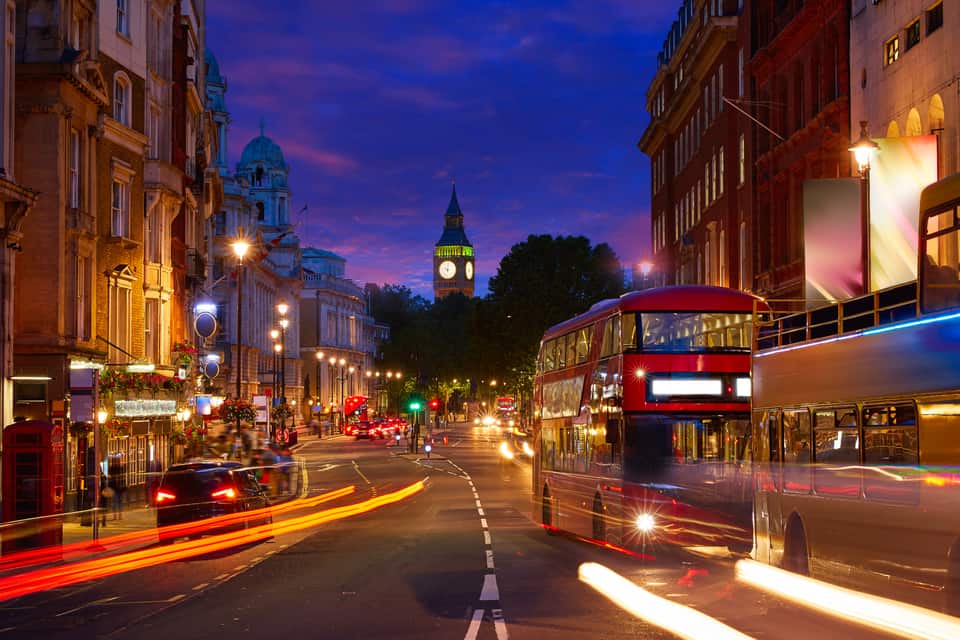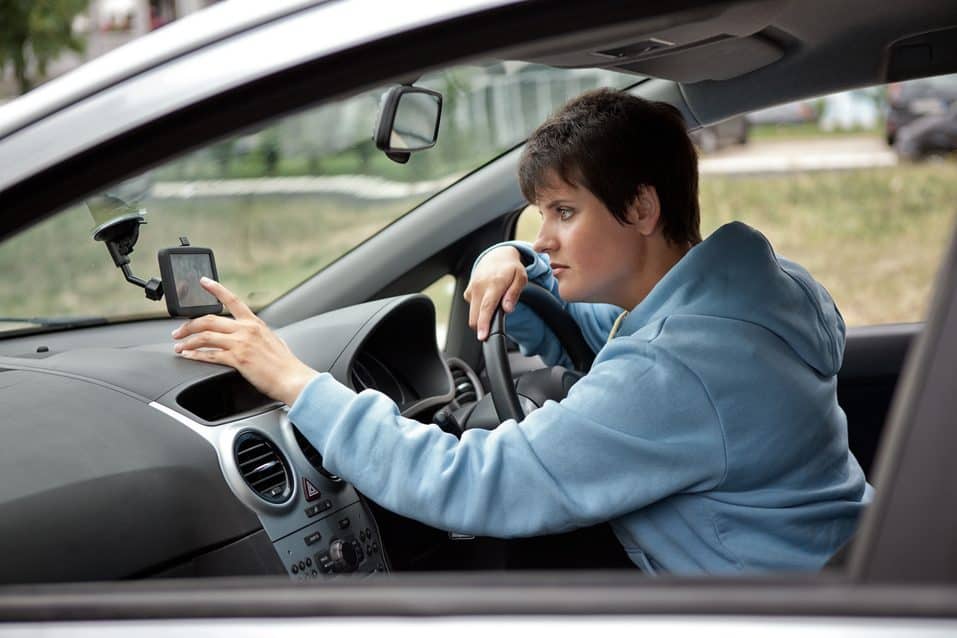30 April 2018 Concept Car
Modern cities are peculiar places: Vast, overcrowded, polluted and earshatteringly loud, they symbolise a lot of what’s wrong with contemporary society. So it should not come as a surprise that city driving, too, is subject to its very own rules.
As newspaper The Telegraph explicates, city traffic moves a lot more sluggishly, which can lull you into inattention. And then, constantly changing situations, such as one way streets, can make things even more complicated:
“City driving can be frustrating and daunting if you’re not used to it,” says Mark Lewis, director of standards at the Institute of Advanced Motorists. “But there is plenty you can do to ease the stresses of this particular type of driving journey.”
What makes urban traffic so particularly dangerous? Mainly, it’s very different participants, from pedestrians to bikers and motorcyclists, from cars to buses, tramways and delivery vans all sharing the same road.
Mutual respect is dearly required here. Instead, as German automobile association ADAC laments, misunderstandings and aggressive behaviour are common.
This will inevitably lead to accidents, as the situation in the city is always complex. Here are the most common reasons for accidents:
And this isn’t even the complete list! So what to do?
This seems like a no brainer. Just like you wouldn’t want to take on the highway in a fiat 500, cruising through peak time traffic in a Hummer seems a bit pointless.
Size is easily the most important selling point for a city car. Size determines whether or not you’ll be able to use that last remaining parking spot. It makes it easier to navigate through traffic safely and comfortably. Size, too, affects your fuel consumption – which is already a problem in the stop-and-go flow of the city.
We have an overview of the best city cars in our blog. So if you’re currently looking for a new car to take you to work or pick up the kids from school, make sure to read it before making your choice.
Safety should always be a top priority. Nowhere, however, is it as important as when you’re driving in the city. Bumper to bumper rides are no exception and the smaller the gaps between you and the vehicles around you, the bigger the odds for a collision.
One of the things you can do to improve security while city driving is simply to know where you’re going. According to auto expert Ed Kriston, it can even pay off to consult a paper map beforehand: “I do that whenever I’m traveling someplace I’ve never been before. It gives me an idea of where I’m going if the GPS doesn’t work.”
Of course, once you’re on the road, a great sat nav with voice control is the better option.
Besides this, there are a few other things you can and should do to bring those odds down again.

We’re sure it’s debatable whether changing lanes frequently can make you reach your destination faster. One thing’s for sure, however: It definitely increases the risk of hitting another car.
This is why all experts recommend switching lanes as seldom as possible. And, as insurify stress, if you do have to change lanes, make sure to at least “never make a last minute decision to switch lanes to catch an exit or turn. It’s always better to safely retrace your steps than to get into a foolish accident.”
Sure, pedestrians can be a nuisance:
However, they are also the most vulnerable traffic participants. Just like bikers, pedestrians only have their own body for protection. This is why you need to pay particular attention to them, whether you like it or not.
Driving fast will be nigh impossible in most major cities anyway. And yet, it can’t hurt to constantly remind you that, within reasonable limits of course, the slower you go, the safer you’ll be.
As JD Power point out, this will help you to “improve your reaction times” so that “when you encounter a surprise, you can stop faster.”
Rush hour traffic tends to take place between the hours of 7:00 a.m. and 9:00 a.m. and 4:00 p.m. and 6:00 p.m. As you will probably know from personal experience, roads tends to be clogged during these times and traffic even more irregular.
City driving is hard enough when things are calmer. So save yourself the pain of sharing the streets with thousands of stressed out commuters on their way to work or home. It won’t just make your ride safer, but more relaxed as well.
Courtesy is generally under appreciated in our times. But there are few instances where it pays off to be polite more as in city traffic. This is because more courtesy means more flow, less aggression and therefore more safety.
Contrary to what some think, it is definitely not a sign of weakness.
Delivery van drivers are among the most experienced city driving experts. It therefore makes complete sense that the possibly best set of driving instructions comes straight from the company that made them famous: UPS.
You can certainly cherrypick from the following five recommendations and benefit from each single one of them. When combined, however, they make for an entire driving philosophy.
Here are the five golden rules of driving according to UPS, including some additional comments from lifehacker: https://lifehacker.com/top-10-ways-to-become-a-better-driver-1596820145
As indicated above, fuel consumption is a major consideration for any driver, in any traffic situation. For city driving, however, it is a particular concern.
“When you think about buying a car, combine the sky-high cost of fuel with the manufacturer’s lowest mpg numbers, and you’ll have some idea what to expect at the filling station,” edmunds.com cheerily write. And that’s by no means an exaggeration!
Which means that next to safety, driving economically should be your top priority for city driving. Here are some of the best tips to get you there.
This recommendation may sound a bit tautological. In practise, however, it’s not quite as primitive as it may first appear.
The reason why fewer trips are so particularly effective at keeping city driving costs to a minimum is because the engine needs to warm up every time you restart it after a longer period of time. This means fuel consumption is a lot higher for the first five miles of every new trip.
Really bringing the number of drives down involves a lot of planning and it also means cutting down on small, unnecessary rides. The best way to start is by considering walking your kids to school. As many experts now agree, not only is it just as safe as driving. But it makes children happier, too.
It is sometimes recommended to never drive into the city unless your tank is at least a quarter full. This is because petrol stations can be hard to find in the inner city. But it is also a good recommendation to save money.
Fuel is expensive enough as it is. But it is most expensive in the city. This is why it can actually make sense drive beyond the city limits and fill up there.
An easy and yet effective way to save on fuel costs is to never let your motor run idle. Electric cars do this anyway, which is why hybrids are such a natural fit in an urban environment.
If you can’t afford one, at least make sure to shut down the engine when you know you’ll be waiting a long time at a red light or when traffic gets congested. Your wallet will thank you.

Implementing all of the above recommendations can seem a bit daunting. Which is why we’re so excited about some of the great new technologies for better city driving that many current cars now come equipped with.
Although you certainly don’t need all of them, owning at least a few of these can significantly improve your driving experience:
For more interesting options, see our guide of cool and must have car accessories.
With these recommendations, you should have a great headstart into beating the city driving blues. If you need further assistance in finding the right car for you, we’re more than willing to help.
Visit our digital showroom or get in touch for a financing proposal. We’re looking forward to hearing from you!
30 April 2018 Concept Car